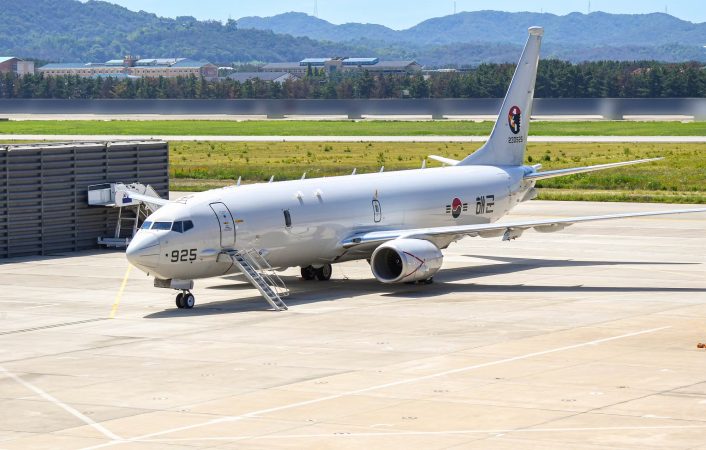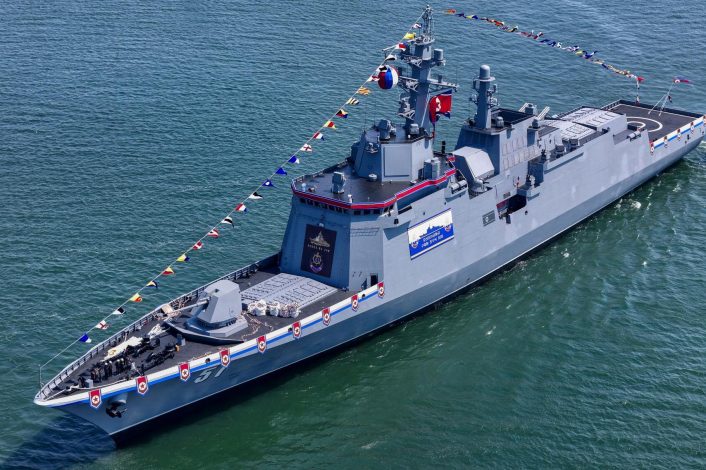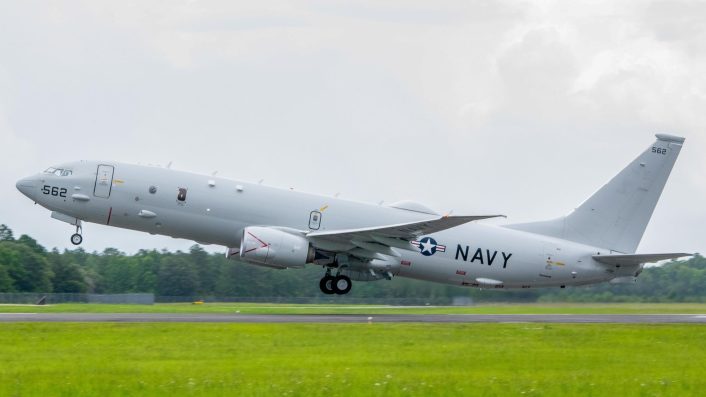The Republic of Korea Navy will use its new P-8A Poseidon maritime patrol aircraft to detect underwater North Korean threats.
The Republic of Korea Navy (ROKN) is now employing operationally its new fleet of six P-8A Poseidon maritime patrol aircraft, after their arrival in in South Korea last year. According to Yonhap Newsofficials said the aircraft are “tasked with detecting underwater North Korean threats.”
The aircraft were ordered in 2020 as part of a Foreign Military Sale (FMS) and arrived at the Naval Air Command in Pohang in June 2024, in two batches of three aircraft each. The Poseidons will replace 15 Lockheed P-3 Orions still in service, of which eight are in the P-3C-III+ standard and seven in the more advanced P-3CK standard, according to FlightGlobal.
An eighth P-3CK was recently lost during a routine training flight on May 29, 2025, causing the death of the four crew members. An investigation is currently being conducted to discover the causes of the crash, which reportedly happened six minutes after takeoff and is the only of the type in ROKN service since the introduction in 1995.
Following the delivery of the new P-8s, the ROKN continued the training for both air and ground crews. After a year of training and operational evaluation, the aircraft “have been assessed fit for operations” and ready to “take part in anti-submarine, anti-surface ship and maritime patrol missions.”

North Korea’s underwater threats
The operational introduction of the P-8, although it was already planned to happen by mid-2025, comes at a delicate time with North Korea flexing its muscles in the maritime domain. In fact, North Korea’s naval forces are undergoing their most ambitious modernization in decades, which might signal a shift from their past use of the vessels.
In April 2025, state media showcased the Choe Hyon-class frigate, a new 5,000‑ton multipurpose warship which was equipped for the first time in North Korea with phased-array radars, vertical-launch missile systems (VLS), cruise and surface-to-air missiles and a helicopter deck. A month later, the second ship of the class, the Kang Kon, capsized during launch but has been quickly salvagedwith plans for more vessels.
Simultaneously, North Korea is also accelerating on the development of new submarine capabilities. For an instance, the country unveiled the construction of what is said to be a nuclear‑powered submarine (est. 6,000–7,000 tons) which could potentially carry about 10 ballistic missiles.
The new frigates and submarines might be able to extend North Korea’s reach, enabling missile strikes on land and sea targets. The real capabilities of these vessels are unclear, however they are not to be ignored to avoid miscalculation and reduce the risks.


P-8 Poseidon
The P-8A Poseidon is a long-range, multi-mission maritime patrol aircraft developed by Boeing for the U.S. Navy to replace the aging P-3C Orion. Based on the 737-800ERX airframe, the aircraft incorporates numerous structural and systems modifications to meet the demanding requirements of anti-submarine warfare (ASW), anti-surface warfare (ASuW), intelligence, surveillance and reconnaissance (ISR), and search and rescue (SAR) operations.
Internally, the Poseidon is equipped with an advanced mission suite that integrates multi-mode radar, an electro-optical/infrared (EO/IR) turret, magnetic anomaly detector (MAD), and a comprehensive acoustic system capable of processing data from over 100 sonobuoys. The aircraft is also capable of deploying Mk 54 lightweight torpedoes, depth charges, and AGM-84 Harpoon anti-ship missiles from both its internal bomb bay and underwing hardpoints.
The P-8A is currently undergoing a significant capability enhancement with the Increment 3 Block 2 (I3B2) upgrade. First flown in June 2025, the Block 2 configuration introduces improved multi-static acoustic processing, new mission systems, an upgraded EW suite, and the integration of advanced weapons such as the AGM-158C Long Range Anti-Ship Missile (LRASM). The update also includes provisions for additional ISR and electronic support payloads, increasing mission flexibility.


Among the key enhancements is the High Altitude Anti-Submarine Warfare Capability (HAAWC), which enables the Poseidon to release torpedoes from high altitude using a winged glide kit. This development significantly increases survivability by allowing the aircraft to remain outside the threat envelope of submarine-launched or ship-based air defenses.
To improve survivability in contested environments, the U.S. Navy has also contracted BAE Systems to develop the Advanced Survivability Pod (ASP). The pod integrates radio-frequency and infrared threat detection, countermeasures, and a fiber-optic towed decoy system, providing protection against radar-guided and heat-seeking missiles.
In service with the U.S. Navy since 2013, the P-8A Poseidon is now also operated by several allied nations including Australia, the United Kingdom, Norway, India, and Germany. As maritime competition intensifies globally, the P-8A’s multi-mission capabilities, ongoing upgrades, and interoperability make it a cornerstone of modern naval operations.
Source link
[aviation news]
Share this content:

